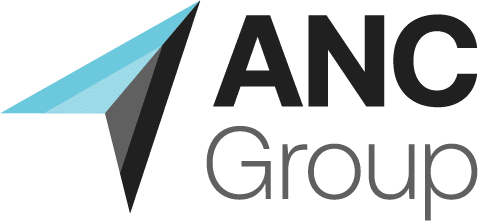It seems like every week there’s another headline about a major data breach or cyberattack. Whether it’s a hospital, school, retailer, or even a government agency, the cost of losing sensitive data is rising—and fast.
There’s no failproof way to avoid a cyber breach, but could there be something that would help businesses and institutions reduce risk and recover faster?
The answer is data loss prevention solutions.
These tools help organizations identify, monitor, and protect sensitive information before it can be misused. If you’re looking to avoid accidental exposure, insider threats, or compliance violations, understanding how DLP works (and how to implement it) is a smart place to start.
What Is Data Loss Prevention (DLP)?
Data loss prevention solutions refer to a set of tools and strategies that help ensure sensitive data stays where it belongs. This includes information like:
- Personally Identifiable Information (PII): Names, Social Security numbers, and addresses
- Financial data: Credit card numbers, bank info, tax documents
- Intellectual property (IP): Trade secrets, patents, proprietary formulas
- Health records: Protected under laws like HIPAA
At its core, DLP relies on three key functions:
- Discover sensitive data—where it’s stored, how it’s being used, and who has access to it.
- Monitor how that data moves throughout your systems and networks.
- Protect it using controls like encryption, access restrictions, and real-time alerts.
When used correctly, data loss prevention solutions can detect risky behavior early and stop a breach before it happens. The DLP market is projected to grow 27.5% year-over-year, fueled by an increase in cyberattacks and the cost to recover from them.
Why Does Data Get Lost in the First Place?
You don’t have to be under attack to lose data. In fact, most incidents start with something simple—like an email sent to the wrong person or a file uploaded to an unsecured platform.
Here are some of the most common causes:
- Employee mistakes: Accidentally attaching a confidential document or sharing the wrong folder.
- Malicious insiders: Disgruntled employees may take sensitive files with them or sabotage systems.
- Cyberattacks: Phishing, malware, and ransomware can all lead to unauthorized data access.
- Lost or stolen devices: Laptops, USB drives, and phones often contain unprotected company data.
- Improper cloud use: Syncing or backing up data to personal cloud accounts without proper safeguards.
Key Features of DLP Solutions
Modern data loss prevention solutions are more than just rule-based filters. They combine several layers of technology to help you control your data no matter where it lives.
Some features to look for include:
- Real-time data monitoring: Watch how data is accessed, used, and shared across endpoints, cloud systems, and networks.
- Data classification tools: Automatically label and categorize files based on sensitivity.
- Policy-based enforcement: Block or warn users when they try to send or move sensitive data outside of approved channels.
- Integration with other tools: DLP systems can work with your firewalls, email gateways, and encryption platforms.
- Role-based access control: Limit who can see, edit, or share certain types of data based on their job function.
Does DLP Support Compliance?
Many industries are now required by law to keep sensitive information protected. Whether you’re handling customer data in retail or patient records in a hospital, failing to do so can come with hefty fines and legal issues.
Data loss prevention solutions help businesses stay compliant with:
- HIPAA (healthcare)
- GDPR (European data protection laws)
- CCPA (California privacy law)
- PCI-DSS (for handling credit card information)
DLP tools help track who accessed what data, when, and what they did with it, making audits and investigations much easier.
Best Practices for Implementing a DLP Program
Even the best tool won’t help if it’s poorly set up. Here are some ways to make sure your DLP program is effective:
- Know where your sensitive data is stored
Run a data discovery process to find and prioritize your most critical information. - Create clear policies
Define what kinds of data need protection and who is allowed to access or share them. - Train your staff
People are the weakest link in most security chains. Make sure employees understand the rules and how to follow them. - Integrate with your existing tools
Your DLP system should work with your current security setup, not replace it. - Review and adjust regularly
Business needs change. So should your policies and tools.
How to Get Expert Help With Your Data Loss Prevention Solutions
Deploying and managing data loss prevention solutions can be overwhelming, especially for small and mid-sized teams. That’s where working with a managed IT provider like ANC Group can help.
We provide:
- Smart setup and configuration so nothing is missed.
- Ongoing monitoring to catch threats and alerts as they happen.
- Flexible solutions that grow with your business needs.
- Expert advice to help fine-tune policies and user access over time.
Don’t Wait for a Breach to Happen
The reality is that data loss isn’t rare anymore. And once information is leaked or stolen, getting it back (or fixing the damage) can be costly.
If you want help finding the right data loss prevention solution or making sure your current setup is working as it should, we’re here to help. Contact ANC Group to schedule a consultation and get the right safeguards in place for your business.

